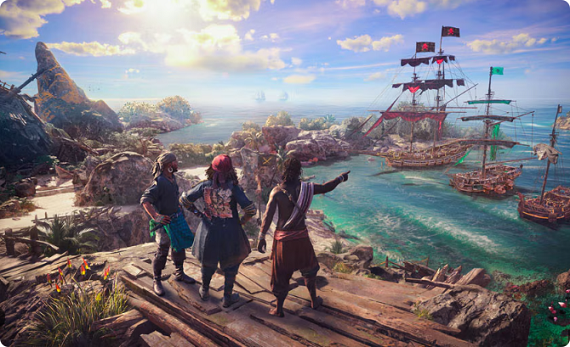MMOexp Skull and Bones: Understanding the Trade Route System

Ultimately, survival in Skull and Bones demands a shift in mindset. Bravery alone will not make you a legend. Instead, it's cunning, preparation, and adaptability that define true pirate captains.
Learn to Skull and Bones Silver read the tides of fortune. Strike when victory is assured. Flee when the cost is too high. Trust your instincts, but verify every gamble with a cold calculation of risk. In the cutthroat waters of Skull and Bones, the pirates who survive are not the boldest—but the smartest.
Survival isn’t just about living another day—it’s about thriving, growing stronger, and ultimately carving your name into legend across the seas.
Mastering Trade Routes in Skull and Bones: Profit and Peril
In Skull and Bones, riches and ruin often sail hand in hand. One of the most lucrative but dangerous ways to amass wealth is by mastering the intricate system of trade routes that crisscross the Indian Ocean. Trade routes serve as the lifelines of the game's economy, ferrying goods between bustling ports and remote outposts. For an ambitious pirate captain, they present both golden opportunities and deadly traps.
To rise from an obscure sailor to a legendary pirate king, players must understand how trade routes operate, how to exploit them, and how to defend their spoils from rival captains and faction enforcers alike.
Understanding the Trade Route System
At its core, Skull and Bones' trade route system simulates the ebb and flow of commerce between various settlements. Merchant vessels—ranging from small trade ships to massive treasure-laden convoys—travel predictable but vulnerable paths across the sea.
Each route connects specific types of ports: resource hubs, manufacturing cities, and trade capitals. Understanding what goods each location specializes in gives players valuable insight into skull and bones boosting service what ships may be carrying at any given time.
- Vibnix Blog
- Politics
- News
- Liberia News
- Entertainment
- Technology
- Educação
- Art
- Causes
- Crafts
- Dance
- Drinks
- Film
- Fitness
- Food
- Jogos
- Gardening
- Health
- Início
- Literature
- Music
- Networking
- Outro
- Party
- Religion
- Shopping
- Sports
- Theater
- Wellness


